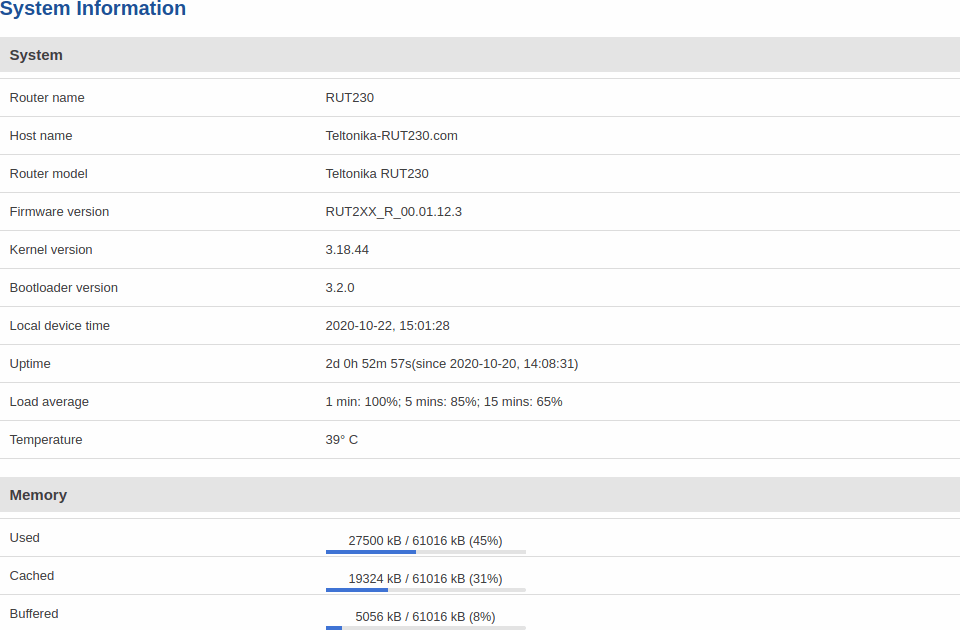RUT230 System (legacy WebUI)
The information in this page is updated in accordance with firmware version RUT2XX_R_00.01.14.7.
Notice: This device has entered it's EOL (End of Life) cycle. For more information, visit our EOL policy here. Temporarily, some content in this page might not match features found in firmware listed above.
Note: this user manual page is for RUT230's old WebUI style available in earlier FW versions. Click here for information based on the latest FW version.
Summary
The System page displays general system and memory information of the device.
This chapter of the user manual provides an overview of the System page for RUT230 devices.
System, Memory
The figure below is an example of the System page and the table below provides information on the fields contained in that page:
| Field | Description |
|---|---|
| Router name | The name of this device. |
| Host name | Hostname of the device. The hostname can be used instead of the LAN IP address to communicate with the device inside the local network. The hostname can be changed in the System → Administration → General page. |
| Router model | Full brand name of the device. |
| Firmware version | Firmware version currently used by the device. The firmware can be upgraded from the System → Firmware page. You can download firmwares for RUT230 from here. |
| Kernel version | Kernel version currently used by the device. A kernel is a computer program responsible for connecting a device's software to its hardware. |
| Bootloader version | Bootloader version currently used by the device. A Bootloader is a program that loads the operating system. |
| Local device time | Current time as perceived by the device. Time settings can be adjusted in the Services → NTP page. |
| Uptime | Amount of time that has passed since the device was last turned on or rebooted. |
| Load average | CPU load average (in %) over the last minute, 5 minutes and 15 minutes. |
| Temperature | Temperature of the modem inside of the device. |
| Used | Amount of random-access memory (RAM) that is currently in use by the device. |
| Cached | Amount of random-access memory (RAM) that is allocated for frequently accessed data storage. |
| Buffered | Amount of random-access memory (RAM) used by temporarily stored data before moving it to another location. |

